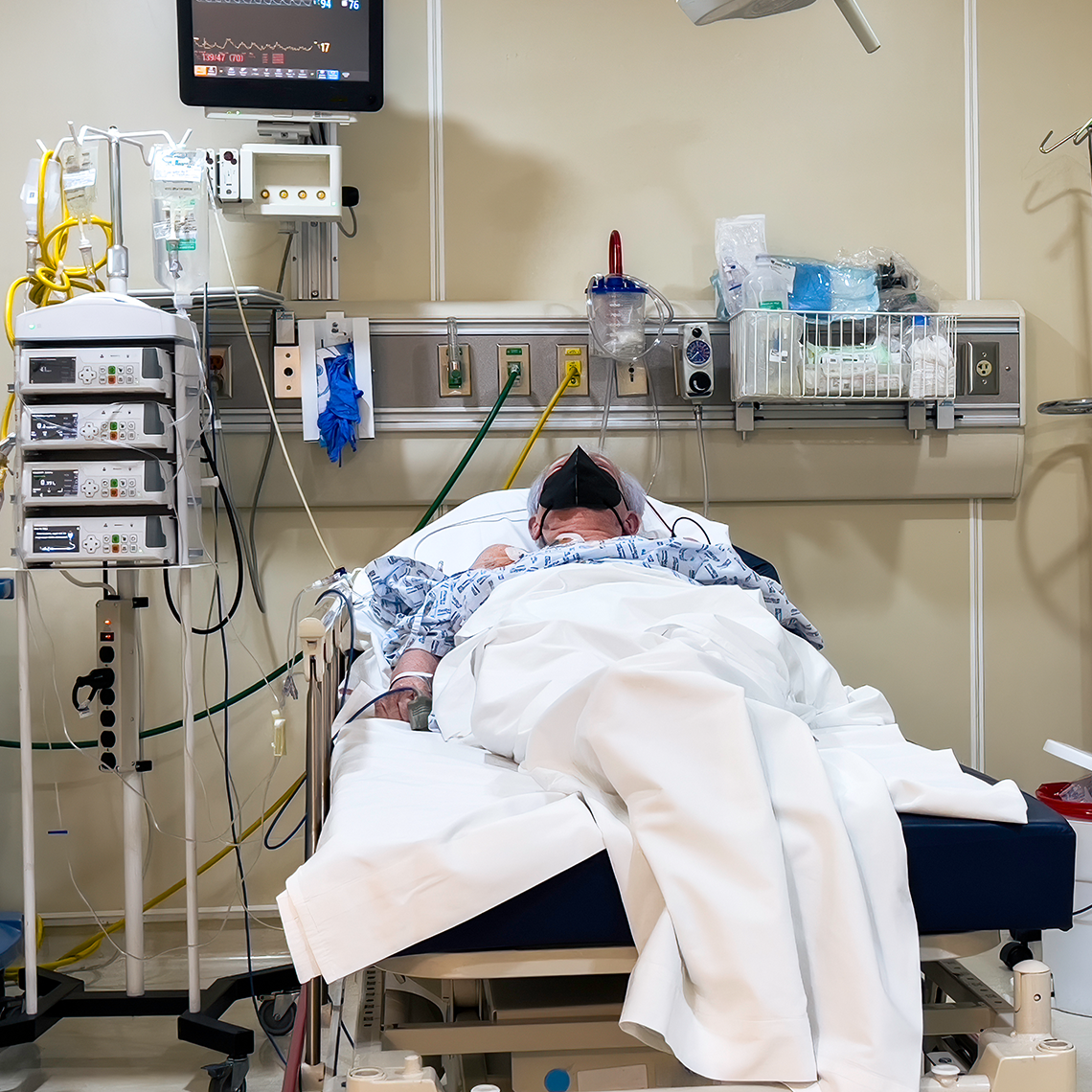Case Study
Oversights in Post-op Diabetes Care Cause Critical Complications

Key Lessons
Proper management of patients with Type I diabetes, particularly on insulin pumps, during and after surgery requires clear protocols, specialist consultation as necessary, and effective communication among the care team to prevent avoidable complications.
Description
Post-op management of an insulin pump in a patient with Type I diabetes results in diabetic ketoacidosis (DKA) and myocardial infarction (MI).
Clinical Sequence
A 56-year-old male with a history of Type I diabetes mellitus (DM), managed with an insulin pump, and peripheral vascular disease was admitted for a femoral-popliteal bypass graft. After the procedure, the patient was transferred to the Post-Operative Care Unit (PACU). Despite having Type I diabetes and being on an insulin pump, endocrinology was not consulted. Without orders from the vascular surgeon, the nurse instructed the patient’s wife to turn off the pump because the patient was sedated and unable to self-bolus. The patient was to be covered with sliding scale insulin (SSI). About an hour later, the patient’s blood sugar was 197. The vascular surgeon was called and they asked the nurse practitioner (NP) to order insulin but, due to busyness, the insulin was never ordered or given. Documentation of these discussions did not exist.
The patient’s blood sugar was 284 when transferred to the floor, and the vascular surgeon was not called. It is unclear whether the admitting team knew the insulin pump was off. Transfer orders included SSI and finger sticks with meals and at bedtime, so he was given one unit of insulin (type unknown). No further testing was done until the following morning when his blood sugar was 434. A rapid response team was called, an insulin drip was started, and the patient was transferred to the ICU for DKA. Serial cardiac enzymes indicated the patient had suffered an MI.
Allegation
The patient alleged a failure of the vascular surgeon to obtain an endocrinology consult resulting in mismanagement of his diabetes and subsequent DKA.
Disposition
The case was settled in the medium range (approx. $250,000).
Clinical Analysis
The surgeon failed to obtain an endocrinology consult for managing the patient’s Type I diabetes.
- Patients with Type I diabetes on an insulin pump receive a continuous basal rate of insulin 24 hours a day. Removing the insulin pump requires replacing the equivalent amount of Lantus or Levemir in two divided doses, 12 hours apart.
- Boluses of insulin should be given according to carbohydrate ratio.
The patient’s blood sugars were inadequately monitored.
- The patient’s finger stick was not repeated after giving the 1 unit of insulin for the blood sugar of 284. A blood sugar of that level in a patient with Type I DM requires more frequent monitoring given they are not receiving their basal dose.
There was a lack of communication among providers.
- The RN did not discuss the management of the insulin pump with the vascular surgeon.
- The surgeon was not called when the patient’s blood sugar rose.
Discussion Questions
- What policies/procedures are in place to manage patients with Type I diabetes on an insulin pump?
- Is there an algorithm for when a patient is not able to manage their insulin pump?
- Does a preoperative plan exist for managing patients with Type I diabetes?
Resources
- British Journal of Anaesthesia (journal article): Clinical recommendations in the management of the patient with type 1 diabetes on insulin pump therapy in the perioperative period: a primer for the anaesthetist
- Endocrinology and Metabolism Clinics of North America (journal article): Inpatient Diabetes Management in the Twenty-First Century
- Hospital Management of Diabetes (journal article): Managing Patients with Insulin Pumps and Continuous Glucose Monitors in the Hospital: to Wear or Not to Wear
This is a fictitious case that illustrates commonly encountered issues and is for educational purposes only. Any resemblance to real persons, living or dead, is purely coincidental.
See More MPL Cases
Medication Mix-up Contributes to Patient’s Death


Incidental Does Not Mean Insignificant

When Test Results Go Unspoken

